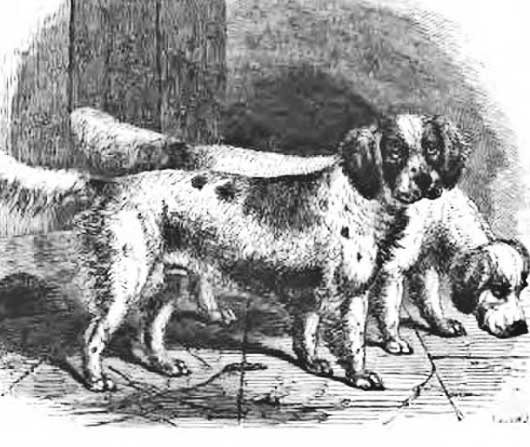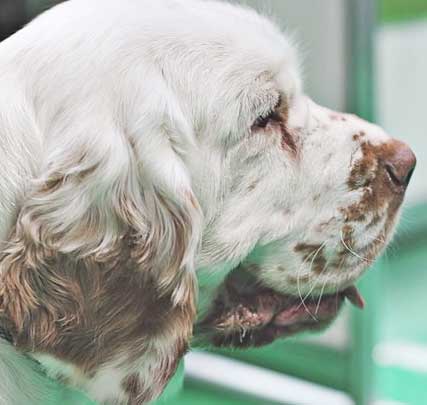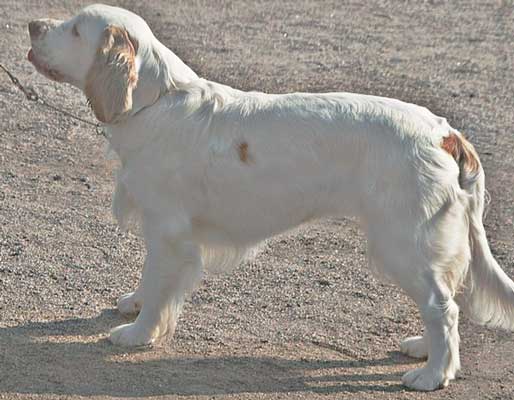Thinking about getting a new dog? The Clumber Spaniel may be for you. But what is this dog like? Is it good with children? What about shedding? Are these puppies hypoallergenic?
Aptly named, this powerful and hardy breed of canine has a long history dating back to mid-1700s France and England.
The Clumber was bred as an attractive game bird hunting dog that could keep up with any hunter at the time. The Clumber Spaniel is a truly unique breed of dog with a long and rich history.
This dog is known for its long white coat, which requires regular grooming and maintenance in order to keep it looking its best.
This dog also has an even temperament and makes an excellent family pet. This post of mine provides information on the history and origin of the breed, as well as tips on how to properly groom your new family addition so that you can enjoy many years together with your furry friend!
What is a Clumber Spaniel?
This spaniel is a robust breed of dog with an ancient history dating back to the 1700s in France and England. This canine was bred for hunting game birds such as pheasants and quails, making it an ideal working gun dog.
It has a distinctive white coat that requires frequent grooming, which makes it an ideal pet for those who are looking for a low-maintenance companion.
Features of a classic Clumber Spaniel:
- A height that stands between 17-20 inches tall and weighs around 55-85 pounds.
- This beautiful creature has a lush white fur coat, along with an iconic long nose and tail. Its rounded head is accentuated by deep-set eyes, while its drooping ears hang gracefully down the sides of its face.
- A strong jaw and short, strong legs that make it an excellent hunter in rough terrain.
- A sturdy and muscular body with a broad head, long muzzle, and ears that drop to the sides of their face.
- Their coat is white in color and can be either long or short. They also have short legs and an even temperament, which makes them easy to train and handle.
History and Origin of the Breed

The Clumber Spaniel was developed in the 1700s by John Russell, an avid hunter from England who wanted to create a dog that could help him hunt game birds. He crossed several breeds together, including Basset Hounds, Springer Spaniels, and Newfoundlands.
The result was the Clumber Spaniel, a breed renowned for its easy-going personality and its distinctive white coat.
Today, this beautiful dog is still a popular choice among those looking for a loyal family pet that doesn’t require much in terms of grooming upkeep. It has even been recognized by the American Kennel Club in 1888.
Grooming Your Clumber Spaniel
The long white coat of this dog requires regular grooming and maintenance in order to keep it looking its best.
It’s important to brush your dog frequently, at least once a week, with a soft bristle brush or grooming mitt.
This will help remove any dirt and debris, as well as keeping their fur free from tangles and knots. You should also trim their nails regularly and check for any signs of infection such as redness or crustiness around the ears or eyes.
Additionally, you should bathe them every few weeks using a mild shampoo designed specifically for dogs.
Is a Clumber Spaniel hypoallergenic?
No, Clumber Spaniels are not hypoallergenic. Their thick white coat requires regular brushing and grooming, meaning that they shed a lot of fur which can trigger allergies in some people.
For those who are looking for an allergy-friendly breed of dog, it might be best to look elsewhere.

Shedding:
The long white coat requires regular grooming and maintenance in order to keep it looking its best.
This breed is known to shed quite a bit, so you should expect some hair around your home. To reduce shedding, make sure to brush your dog daily or at least several times per week with a stiff bristle brush or grooming mitt.
It requires frequent grooming and maintenance in order to keep its coat looking its best, but this is a small price to pay for such a loyal companion. This may help to reduce allergies, if you decide you simply must have one in your home.
This will help remove dead hair and debris from the coat and also promote healthy skin and fur growth.
Clumber Spaniel price
How much do Clumber Spaniel puppies cost? A Clumber Spaniel puppy can cost anywhere from $700 to $2,000 depending on the breeder and the quality of the dog.
Clumbers are not a particularly uncommon breed, so it should be easy to find one in your area. It is important to remember that with any purebred dog, you will want to research the breeder thoroughly before making any purchases.
Be sure that you ask about the health background of both parents as well as the puppies’ medical history before committing to buy one. Additionally, there may be additional costs for vaccinations and spaying/neutering if these services have not already been done.
What about a working Clumber Spaniel?
Working Clumber Spaniels can be used for a variety of tasks such as hunting, tracking, retrieving and even agility. These dogs are highly trainable and intelligent, making them well-suited for many tasks.
They are also highly loyal and eager to please, which makes them a great choice for any type of work. If you are interested in using your Clumber Spaniel for a particular job, you will want to research the breed and make sure that it is suitable for the task at hand.
Additionally, you will want to find a reputable breeder who specializes in working Clumber Spaniels in order to ensure that the dog you get is of good quality and has a sound temperament.

Clumber spaniel health issues
Clumber Spaniels are generally a healthy breed of dog, but like all breeds, they can be susceptible to certain health issues.
The most common issues seen in the breed include:
- Hip dysplasia
- Eye problems
- Epilepsy
- Intervertebral disc disease
It is important to keep your puppy up-to-date with all of its vaccinations and regular vet checkups. Additionally, you should be aware of any signs that may indicate a health issue such as excessive scratching or itching, sudden limping or unusual behavior.
If you notice any concerning signs in your dog it is best to take them to the vet immediately for evaluation and treatment. By doing so you can help ensure that your dog lives a long and healthy life.
Do Clumber Spaniels Chew a lot?
Clumber Spaniels do not typically display destructive chewing behaviours; however, they can explore their environment and investigate things by chewing. To prevent any destructive chewing habits, it is important to provide your puppy and adult pooch with plenty of appropriate chew toys and interactive activities.
It is also a good idea to actively supervise your dog when she is playing with any chew items or exploring new objects.
If you catch her attempting to chew something inappropriate, give her an immediate verbal correction and then redirect her focus onto a toy or other activity that she can do safely.
With patience and consistency, most of these dogs learn the house rules quickly and will make excellent companions in no time.
In addition to providing your dog with ample opportunities for playtime and exercise, it’s also important to practice proper dental hygiene. Brushing your dog’s teeth regularly can help prevent plaque buildup.
Conclusion
The Clumber Spaniel is an intelligent, loyal breed of dog that originated in the 1700s in France and England. It has a thick white coat which requires regular grooming and maintenance in order to keep it looking its best.
The Clumber Spaniel is a large, sturdy breed with a distinctive white coat and an even temperament. It has been used as a working gun dog for centuries and makes an excellent family pet today.
Although this spaniel is generally a healthy breed, it can be prone to certain health issues such as hip dysplasia, eye problems and epilepsy. It is important to keep your dog up-to-date with regular vet checkups and vaccinations in order to help ensure its good health.
All in all, this dog is an excellent companion for anyone looking for a loyal and devoted friend. With proper care and attention, this breed will bring you joy and companionship for many years to come.